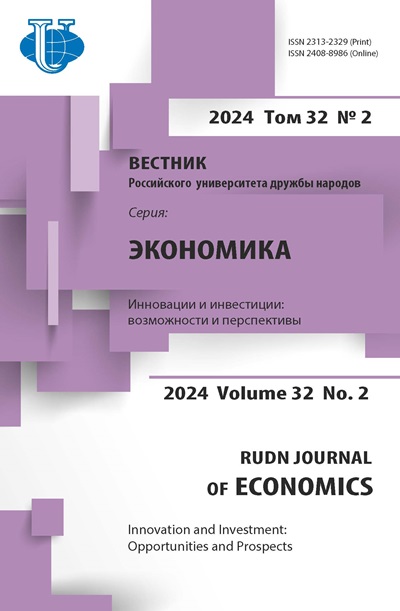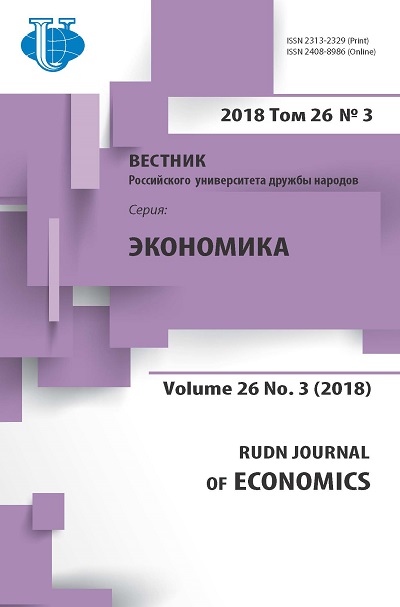Влияние фискальной и денежно-кредитной политики на экономический рост и циклическое развитие экономики
- Авторы: Лизи Я.1
-
Учреждения:
- Экономический университет в Братиславе
- Выпуск: Том 26, № 3 (2018)
- Страницы: 439-446
- Раздел: ГЛОБАЛИЗАЦИЯ И ЭКОНОМИЧЕСКАЯ ИНТЕГРАЦИЯ
- URL: https://journals.rudn.ru/economics/article/view/20299
- DOI: https://doi.org/10.22363/2313-2329-2018-26-3-439-446
Цитировать
Полный текст
Аннотация
Цикличность развития экономики и поиск эффективной фискальной и денежно-кредитной политики как инструмента смягчения циклических колебаний будут долгое время оставаться предметом многих профессиональных дискуссий. В частности, кризисные процессы в XXI в. возобновили дебаты между кейнсианцами и сторонниками политики монетаризма. Цель статьи - сравнить и оценить различные подходы к эффективному применению инструментов финансовой и денежно-кредитной политик и возможности их практического применения. Многие экономисты пришли к выводу, что осуществление денежно-кредитной политики ведет к более эффективному распределению производственных ресурсов, как в случае фискальной экспансии. Очевидно, что даже в будущем продолжатся споры о том, является ли причиной циклических колебаний неправильная реализация экономической политики или провал экономических и политических институтов.
Ключевые слова
Об авторах
Ян Лизи
Экономический университет в Братиславе
Email: jan.lisy@euba.sk
профессор Экономического университета в Братиславе, факультет народного хозяйства, кафедра экономической теории Словацкая Республика, 85235, Братислава, Долноземска цеста, 1
Список литературы
- Arrow K. J. (2012). Economic Theory and the Financial Crisis. Information System Frontiers, 14(5), 967-970
- Acemoglu D. (2009). Introduction to Modern Economic Growth. Oxford, Princeton University Press. Blanchard D. et al. (2012). In the Wake of the Crisis: Leading Economists Reassess Economic Policy. Cambridge, The MIT Press
- Čaplánová A., Šujanský M. (2011). Teoretické prístupy k ekonomickému cyklu - východisko pre pochopenie súčasných krízových procesov. Ekonomické rozhľady, 40(1), 22-38
- Dujava D. (2016). Ekonomické krízy a ekonomická veda. Bratislava, Wolters Kluwer
- Friedman M. (1993). Kapitalismus a svoboda. Praha, Liberální institut
- Hayek F. A. (1975). Monetary Theory and the Trade Cycle. New York, Augustus M. Kelley Publishers
- Keynes J. M. (1963). Obecná teorie zaměstnanosti, úroku a peněz. Praha, Nakladatelství Československé akademie věd
- Krugman P. (2009). The Return of Depression Economics and the Crisis of 2008. New York, W.W. Norton & Company
- Lisý J. a kol. (2011). Ekonomický rast a ekonomický cyklus. Teoretické a praktické problémy. Bratislava, Iura Edition
- Mankiw N. G. (1999). Zásady ekonómie. Praha, Grada Publishing
- Mises L. (1998). Liberalismus. Praha, Liberální institut
- Sojka M. (1999). John Maynard Keynesa a současná ekonomie. Praha, Grada Publishing
- Soto J. H. (2009). Peníze, banky a hospodářské krize. Praha, ASPI, Liberální institut
- Šikula M. (2009). Kritická miera rozporov civilizácie a globálna ekonomické kríza. Ekonomický časopis, 57(8), 732-755
- Švihlíková I. (2010). Globalizace a krize: souvislosti a scénáře. Všeň, Grimmus
- Weil D. (2009). Economic Growth. Boston, Pearson Addison Wesley















